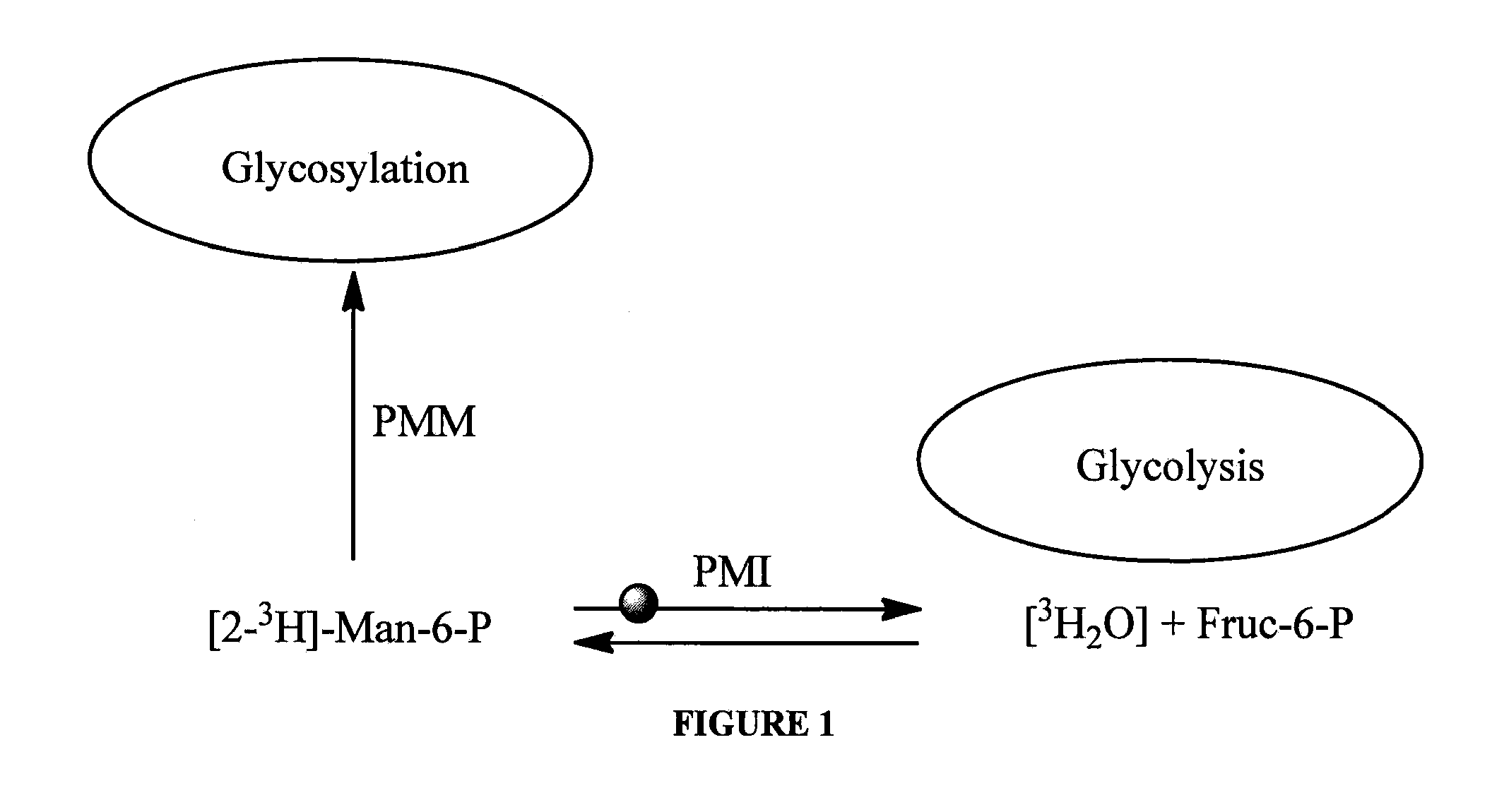Benzoisothiazolones as inhibitors of phosphomannose isomerase
a technology of phosphomannose isomerase and benzoisothiazolone, which is applied in the direction of antibacterial agents, drug compositions, and metabolic disorders, can solve the problems of infant mortality, no treatment for cdg-ia patients, and malfunction of several different organ systems
- Summary
- Abstract
- Description
- Claims
- Application Information
AI Technical Summary
Benefits of technology
Problems solved by technology
Method used
Image
Examples
example 1
Compound Collection Utilized in HTS
[0125]The compound library used in the high throughput screening assay (HTS) was supplied by the NIH Molecular Libraries Small Molecule Repository (MLSMR, http: / / www.mli.nih.gov / mlsnir). The MLSMR, funded by the NIH, is responsible for the selection of small molecules for HTS screening, their purchase and QC analysis, library maintenance and distribution within the NIH Molecular Libraries Screening Center Network (MLSCN. http: / / www.mli.nih.gov / mlscn). Both MLSMR and MLSCN are parts of the Molecular Libraries Initiatives (MLI, http: / / nihiroadmap.nih.gov / molecularlibraries) under the NIH Roadmap Initiative (www.nihroadmap.nih.gov). MLSMR compounds are acquired from commercial, and in part from academic and government sources and are selected based on the following criteria: samples are available for re-supply in 10 mg quantity, are at least 90% pure, have acceptable physicochemical properties and contain no functional groups or moieties which are kno...
example 2
High Throughput Screening Assays
[0126]For the HTS assay, 9 μl, of 2.2-fold PMI working solution was added to 384-well clear plates (Greiner 781101) containing 2 μL compound solutions; 2 μL of AF15394 solution in 10% DMSO and 10% DMSO alone were utilized for positive and negative control wells, respectively. The PMI working solution contained 50 mM Hepes, pH 7.4, 5 mM MgCl2. 0.5 mM NADP+, 1 IU / mL PGI, 1.37 / mL IU G6PDH and 0.9 μg / mL of PMI. After 60 min pre-incubation 9 μL of 2.2-fold mannose-6-phosphate working solution was added to the plates. Absorbance change was measured in a kinetic mode for 4 minutes at 340 nm. The slope of the progress curves was determined using linear regression. Compounds showing more than 50% inhibition were followed up with dose-response confirmation.
example 3
Anti-Infective In Vitro Assays
[0127]The antimicrobial activity of compound 19 (5-Fluoro-2-phenylbenzo[d]isothiazol-3(2H)-one), was evaluated in the following anti-infective in vitro assays. The methods employed in this study were adapted from the scientific literature to maximize reliability and reproducibility. The reference standards were run as an integral part of each assay to ensure the validity of the results obtained. The assays were performed under conditions described below. The literature reference(s) for each assay are also provided as follows: Enza Di Modugno, Isabelle Erbetti, Livia Ferrari, Gianluca Galassi, Stephen M. Hammond, and Luigi xerri (1994) Microbiological properties of a new cephalosporin, BL-S 339: 7-(phenylacetyimidoyl-aminoacetamido)-3-(2-methyl-1,3,4-thiadiazol-5-ylthiomethyl)ceph-3-em-4-carboxylic acid. Antimicrobial Agents Chemotherapy 3: 40-48; Misiek, M., Pursiano, T. A., Leitner, F. and Price, K. E. (1973) In Vitro Activity of the Tribactam GV 10432...
PUM
| Property | Measurement | Unit |
|---|---|---|
| weight | aaaaa | aaaaa |
| weight | aaaaa | aaaaa |
| weight | aaaaa | aaaaa |
Abstract
Description
Claims
Application Information
 Login to View More
Login to View More - R&D
- Intellectual Property
- Life Sciences
- Materials
- Tech Scout
- Unparalleled Data Quality
- Higher Quality Content
- 60% Fewer Hallucinations
Browse by: Latest US Patents, China's latest patents, Technical Efficacy Thesaurus, Application Domain, Technology Topic, Popular Technical Reports.
© 2025 PatSnap. All rights reserved.Legal|Privacy policy|Modern Slavery Act Transparency Statement|Sitemap|About US| Contact US: help@patsnap.com



